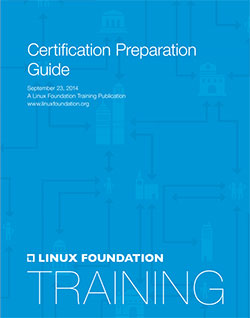 Because the Linux Foundation’s new sysadmin certification exams are performance-based, you’ll want to get as much hands-on practice with the command line as you can before test day.
Because the Linux Foundation’s new sysadmin certification exams are performance-based, you’ll want to get as much hands-on practice with the command line as you can before test day.
“When it comes to [performance-base] evaluation, book smarts just aren’t going to do it for you, because things don’t work exactly like you expect,” Shawn Powers, an online trainer for CBT Nuggets and editor for the Linux Journal, told Linux.com for our recent article on how to study for a certification exam.
To help admins prep for the LFCS (Linux Foundation Certified Sysadmin) exam, Tecmint has prepared a series of 10 tutorials that cover the domains and competencies outlined in the Linux Foundation’s free certification prep guide. These include topics in local system administration, local security, shell scripting, filesystem and storage, software management and the command line. Along with the many resources outlined in the prep guide, these tutorials can help you practice and polish your skills before exam day.
Tecmint’s 10 Tutorials to Prep for LFCS
1. How to use GNU ‘sed’ Command to Create, Edit, and Manipulate files in Linux
Learn about I/O streams and how to use the sed, uniq, grep, tr and cut commands
2. How to Install and Use vi/vim as a Full Text Editor
How to perform basic file editing operations with Vi/Vim.
3. How to Archive/Compress Files & Directories, Set File Attributes and Find Files in Linux
This covers archiving and compression tools such as the tar utility; using the find to command to search for files; and the basics of file permissions and attributes.
4. Partitioning Storage Devices, Formatting Filesystems and Configuring Swap Partition
How to divide a single hard drive into one or more parts or “slices” called partitions.
5. How to Mount/Unmount Local and Network (Samba & NFS) Filesystems in Linux
How to manage storage devices.
6. Assembling Partitions as RAID Devices – Creating & Managing System Backups
Learn about RAID and RAID levels, how to create partitions, manage them and back up your data.
7. Managing System Startup Process and Services (SysVinit, Systemd and Upstart)
Learn the boot process, how services work and how to manage them.
8: Managing Users & Groups, File Permissions & Attributes and Enabling sudo Access on Accounts
How to add, edit, suspend, or delete user accounts, along with granting them the necessary permissions to do their assigned tasks.
9: Linux Package Management with Yum, RPM, Apt, Dpkg, Aptitude and Zypper
How to install and maintain software on the system.
10: Understanding & Learning Basic Shell Scripting and Linux Filesystem Troubleshooting
Along with a short section on troubleshooting, this includes a guide to terminals and shells, including Bash, sh and ksh shells; Bash shell scripting; constructing conditions, loops, and more.
